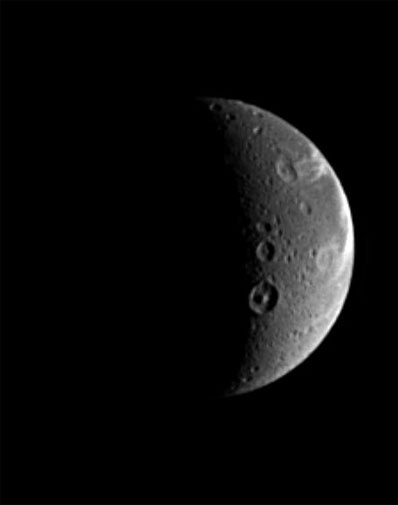
Spaceflight Now +

|

|

|

|

Premium video content for our Spaceflight Now Plus subscribers.

Expedition 11 in review
 The Expedition 11 mission of commander Sergei Krikalev and flight engineer John Phillips aboard the International Space Station is winding down, and this narrated retrospective looks back at the key events of the half-year voyage in orbit. The Expedition 11 mission of commander Sergei Krikalev and flight engineer John Phillips aboard the International Space Station is winding down, and this narrated retrospective looks back at the key events of the half-year voyage in orbit.

 Play video Play video

Pluto spacecraft
 The Pluto New Horizons spacecraft, destined to become the first robotic probe to visit Pluto and its moon Charon, arrives at NASA's Kennedy Space Center in advance of its January blastoff. The Pluto New Horizons spacecraft, destined to become the first robotic probe to visit Pluto and its moon Charon, arrives at NASA's Kennedy Space Center in advance of its January blastoff.

 Play video Play video

Life on the station
 NASA astronauts Bill McArthur and John Phillips chat with Associated Press space reporter Marcia Dunn about life aboard the International Space Station in this live space-to-Earth interview from the Destiny laboratory module on October 5. NASA astronauts Bill McArthur and John Phillips chat with Associated Press space reporter Marcia Dunn about life aboard the International Space Station in this live space-to-Earth interview from the Destiny laboratory module on October 5.

 Dial-up | Broadband Dial-up | Broadband

West Coast Delta 4
 In preparation for the West Coast launch of Boeing's next-generation Delta 4 rocket, the two-stage vehicle is rolled out of its horizontal hangar and driven to the Space Launch Complex-6 pad for erection. The nose cone for the NRO payload is then brought to the pad. In preparation for the West Coast launch of Boeing's next-generation Delta 4 rocket, the two-stage vehicle is rolled out of its horizontal hangar and driven to the Space Launch Complex-6 pad for erection. The nose cone for the NRO payload is then brought to the pad.

 Play video Play video

West Coast shuttle
 Boeing's Delta 4 rocket pad at Vandenberg Air Force Base was renovated in recent years, transforming Space Launch Complex-6 from the West Coast space shuttle launch site into a facility for the next-generation unmanned booster. This collection of footage shows the 1985 launch pad test using NASA's orbiter Enterprise. Boeing's Delta 4 rocket pad at Vandenberg Air Force Base was renovated in recent years, transforming Space Launch Complex-6 from the West Coast space shuttle launch site into a facility for the next-generation unmanned booster. This collection of footage shows the 1985 launch pad test using NASA's orbiter Enterprise.

 Full coverage Full coverage

 Become a subscriber Become a subscriber
 More video More video

|

|

|

|
|

|

Cassini looks at Virgil's moon
CASSINI PHOTO RELEASE
Posted: October 8, 2005

Credit: NASA/JPL/Space Science Institute
Download larger image version here
|
When naming features on other worlds, scientists like to follow themes, and Saturn's moon Dione is no exception. Dione possesses numerous features with names from Virgil's "Aeneid." The prominent crater showing a central peak below the center is Dido, a 118-kilometer-wide (73-mile) crater named after the supposed founder of Carthage. The crater just above Dido is Antenor, an 82-kilometer-wide (51-mile) impact crater named after the nephew of Priam who founded the Italian city of Padua. At the upper right is the 97-kilometer-wide (60-mile) impact crater Turnus, which lies at the western end of Carthage Linea, a region of bright, fractured terrain. Dione is 1,118 kilometers (695 miles) across.
The sunlit terrain seen here shows some of the wispy markings on the moon's trailing hemisphere. Cassini revealed that these markings are actually a complex system of fractures.
North on Dione is up and rotated 25 degrees to the left.
The image was taken in visible light with the Cassini spacecraft narrow-angle camera at a distance of approximately 1.1 million kilometers (700,000 miles) from Dione and at a Sun-Dione-spacecraft, or phase, angle of 107 degrees. Resolution in the original image was 7 kilometers (4 miles) per pixel. The image has been magnified by a factor of two and contrast-enhanced to aid visibility.
The Cassini-Huygens mission is a cooperative project of NASA, the European Space Agency and the Italian Space Agency. The Jet Propulsion Laboratory, a division of the California Institute of Technology in Pasadena, manages the mission for NASA's Science Mission Directorate, Washington, D.C. The Cassini orbiter and its two onboard cameras were designed, developed and assembled at JPL. The imaging operations center is based at the Space Science Institute in Boulder, Colo.
|

|

|

|
|



